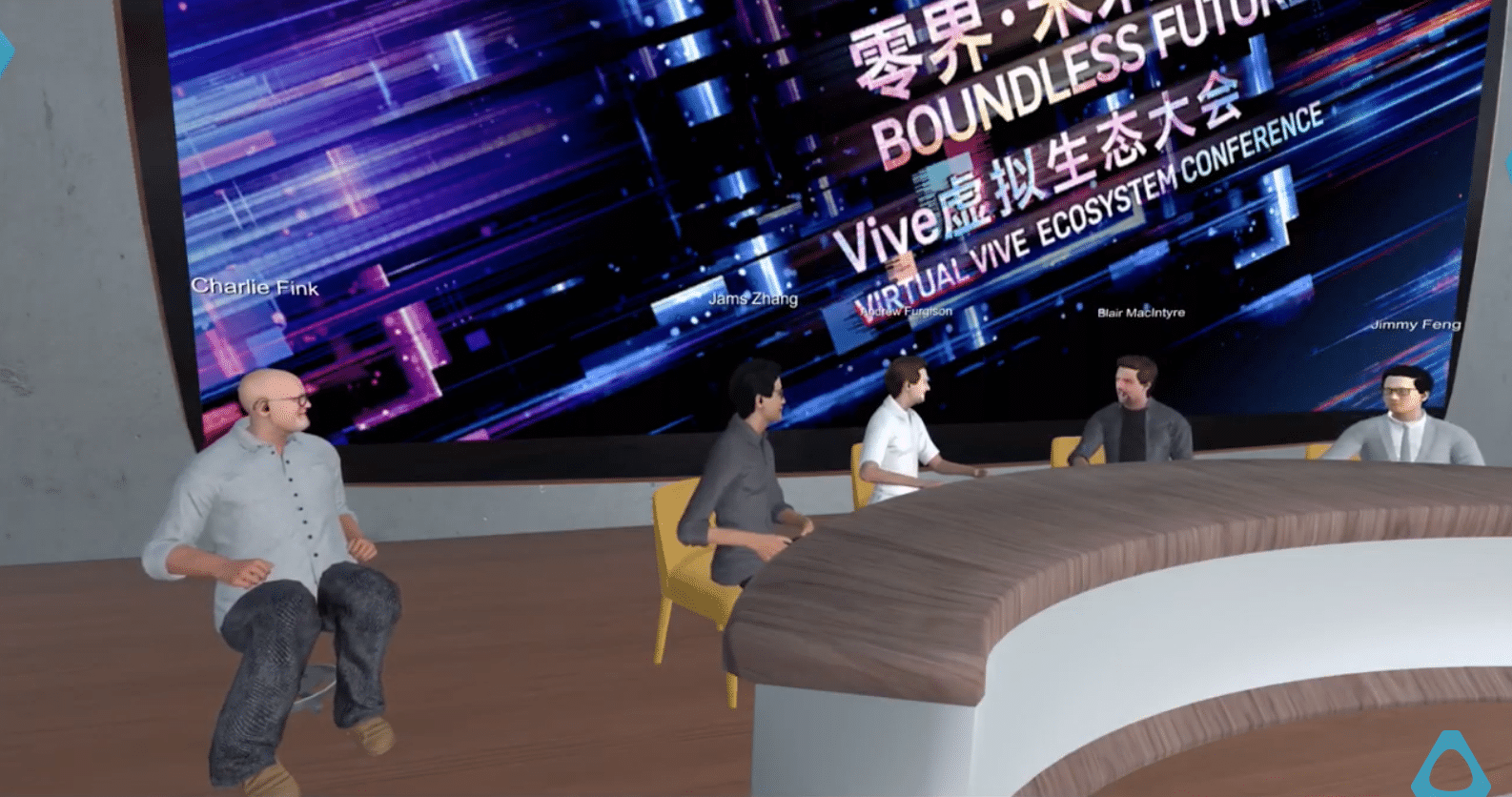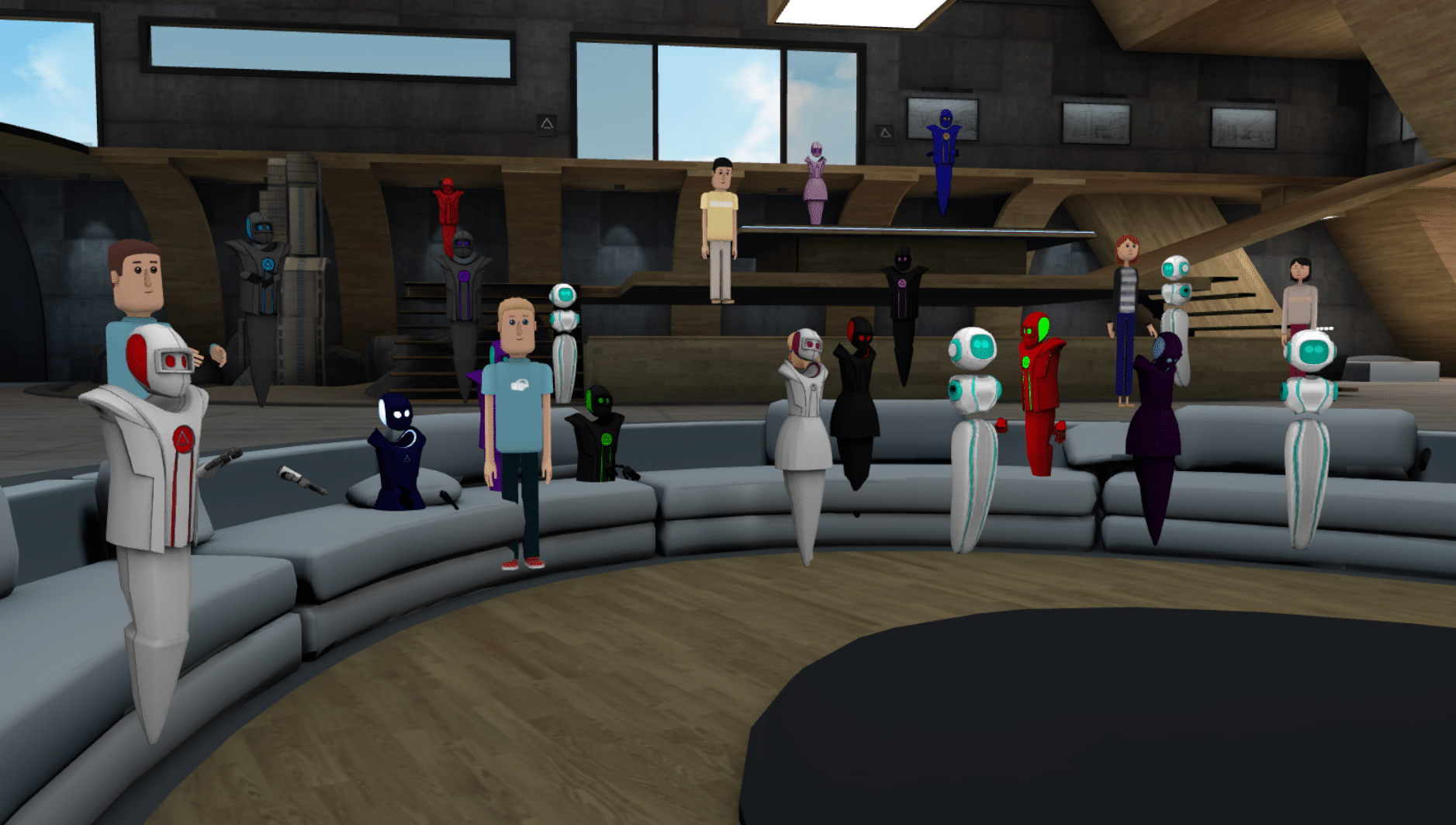
XR Talks is a series that features the best presentations and educational videos from the XR universe. It includes embedded video, as well as narrative analysis and top takeaways. Speakers’ opinions are their own.
With the world in lockdown, industry conferences have morphed into glorified webinars and Zoom calls. This quick pivot and resilience on the part of event producers is commendable. But with the benefit of additional time, a more meaningful and immersive long-term medium will be needed.
This has raised questions within spatial computing circles about how VR can come to the rescue. And conversely, can this elevated demand for meaningful and immersive event participation represent VR’s moment to shine? The technology could certainly use a chance to prove itself.
This has been the topic of many virtual roundtable discussions, two of which we cherry-picked for this week’s featured XR talk (videos below). This follows last week’s featured talk that similarly speculated spatial computing’s role in supporting the new-normal paradigm of remote work.

Dual Modality
One challenge we’ve separately examined involves the dual modality of conferences — the interplay of programming and networking. The vanity of stage time draws influential speakers, which attract audience, which in turn attract sponsors. And BD folks are drawn to all of the above.
So in devising virtual events, all of the above need to be accommodated (or programming and networking should be decoupled as we’ve speculated). At this early stage of VR’s lifecycle, low penetration means that events need to take a multi-platform approach to reach all these players.
This was the consensus of a recent panel moderated by Charlie Fink during HTC’s VIVE Ecosystem Conference, held in VR (video below). Panelist, Mozilla research scientist and IEEE co-chair Blair MacIntyre summed up the thinking behind the need for a multi-platform approach.
“VR isn’t enough. So we’re also going to use Slack for conversations and things like SlideO for trying to collect questions. We’re going to use Zoom for part of the stuff. So we’re pulling together tons of technology in order to create something that starts to feel like an event.”
Inherent Scale
In terms of where these approaches apply to different aspects of an event, it depends on group size says MacIntyre. VR doesn’t do much for watching a keynote… that can be done just as well in 2D video. But for collaborative breakout sessions or workshops, VR’s interactivity can be additive.
“Social aspects of hallway conversations and casual interaction is what drove me to experiment with virtual worlds for these conferences. Watching streams on Twitch doesn’t give you any opportunity to have those social experiences […] We’ve got, as of right now, 1200 people registered. If we get them split across rooms of 20-25 people, we can start having these conversations.”
The good news according to MacIntyre is that once these approaches find their sweet spot, payoffs include strong unit economics and scale. As we examined recently, virtual events can tap into the inherent scale of the web, while sidestepping friction, travel and costs of physical events
“When you can mix VR and avatars with video and voice so I that can see you, I can get to know you and we can spend time together, I think there’s an enormous opportunity. So much of what goes on at, say, AWE is demos. But it’s also going to the talks and listening, and just talking to people. So I think a lot of that stuff can easily be replaced for a lot of people. And then instead of 6,000 people, imagine it’s 70,000, 80,000 or 100,000 people. You can reach enormous audiences.”

Learning Curve
Switching gears, all of the above sounds great but most event producers aren’t advanced enough to do it yet. That includes the meetup community. In fact, we’re in that boat currently, testing various VR platforms for SF-based meetup groups we work with (more to announce soon).
For these event organizers, a learning curve is underway to just get the basics and mechanics down. That’s where this week’s second featured talk comes in. Brightline Interactive hosted a Zoom panel to walk through basic definitions and considerations for virtual events (video below).
One foundational distinction to start with is do you want your event in Zoom (virtual) or VR (immersive)? That will depend on many factors like the audience’s VR savvy. But for the reasons cited above, some customized mix might be optimal, considering low headset penetration.
Brightline’s Donny Neufuss also recommends asking yourself if your event needs to be live or can it be recorded and “simulated live.” Anything in VR should be live due to the level of interaction. But for most virtual events today done on Zoom, “live” is more a matter of habit than practicality.
“A common mistake is that when people contact us, they think because the event they did was live, that everything has to be live. The truth of the matter is that’s just not the case. There are certain speakers or certain information that might garner it being live. […] But the majority of the content of breakout rooms — all the education sessions — those are for smaller audiences, more niche audiences, and that’s where on-demand is appropriate.”
See the full video below for lots more commentary on virtual event definitions, platform choices and considerations, followed by a panel discussion of VR industry leaders. Also see our recent breakdown of tips and tactics for running a meetup in VR, and stay tuned for more on this topic.
https://youtu.be/Tzw2J8Y4CzY
For deeper XR data and intelligence, join ARtillery PRO and subscribe to the free AR Insider Weekly newsletter.
Disclosure: AR Insider has no financial stake in the companies mentioned in this post, nor received payment for its production. Disclosure and ethics policy can be seen here.
Header image credit: HTC, YouTube
